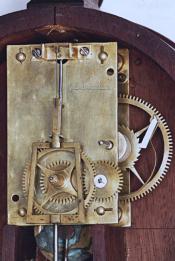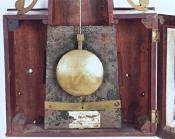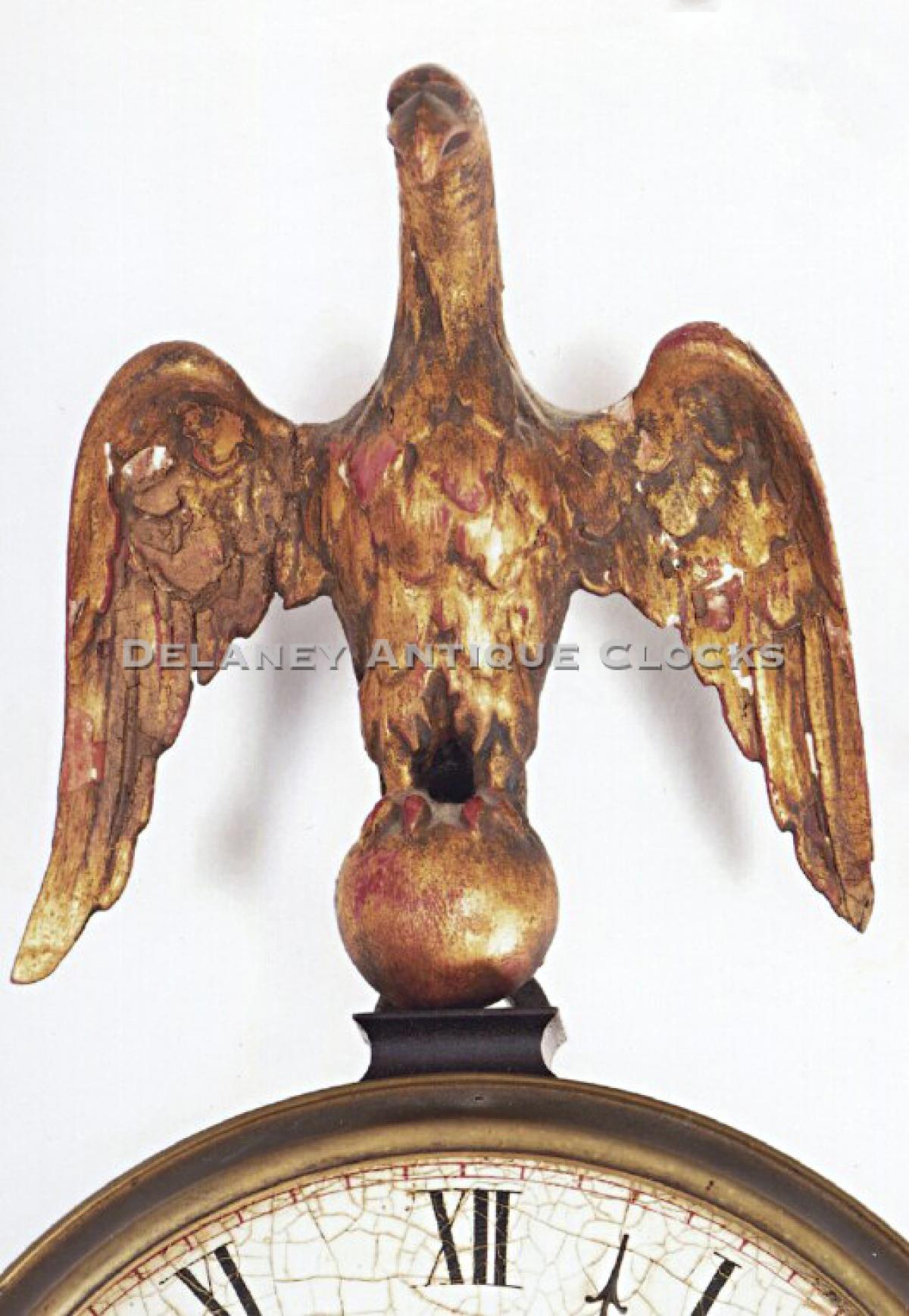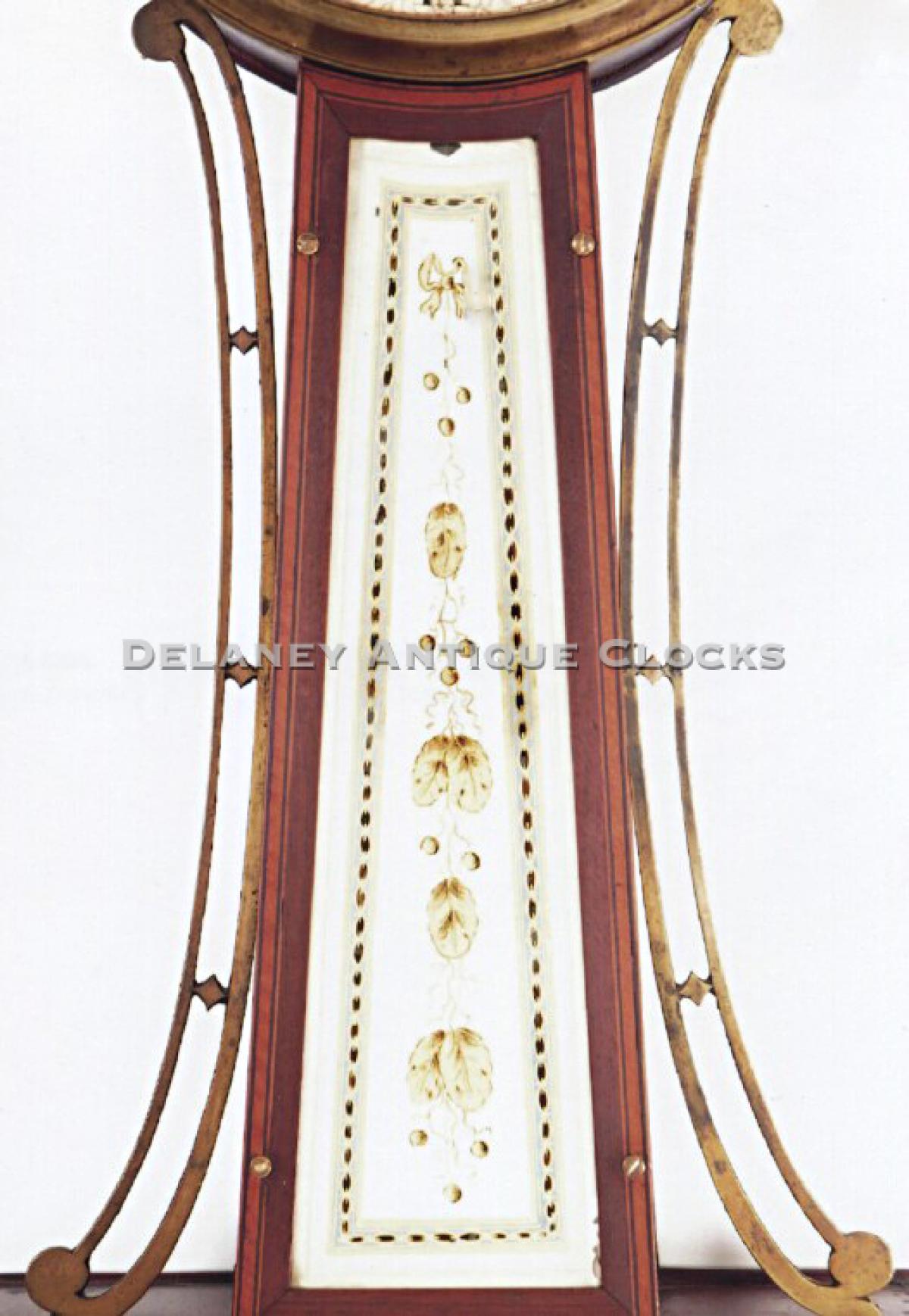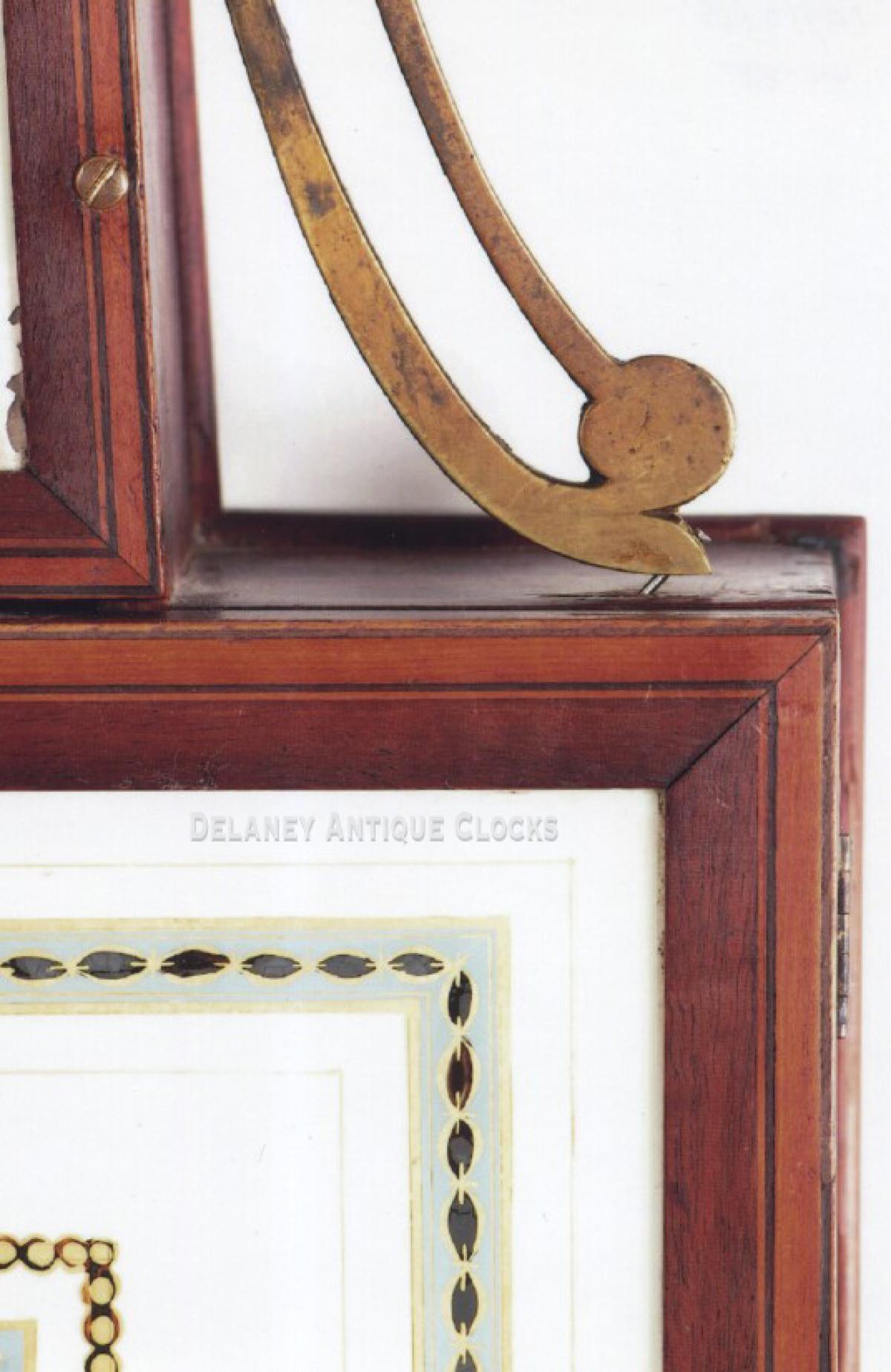Simon Willard's Patent Timepiece. A wall clock. UU-90.
This is a very attractive Federal Massachusetts Timepiece or "Banjo clock" made circa 1805.
This is a true Simon Willard timepiece. It is this very form that Simon patented on February 2nd in 1802. This gave him fourteen years, till 1816, to produce this form exclusively. President Thomas Jefferson signed this document. The timepiece was a revolutionary design. This is a compact, reliable and an accurate eight day time keeper that is traditional designed to hang on the wall.
This clock case is constructed in mahogany and exhibits excellent early proportions. The flat frames are line inlaid with a banding that feature six linear strips of wood. The woods used in their construction include mahogany, tiger maple and ebony. The throat frame is rabbeted on the back side and is secured to the sides of the case with four flathead screws. Both of the frames support the paint decorated tablets. These egloimise tablets are paint decorated in multiple colors from the back. The white field suspends the color blue and various gilt designs. These designs are executed in a traditional geometric format. The lower tablet is signed by the Maker, “S. Willard’s / Patent.” Both tablets are original to this clock and are in excellent condition. Brass side arms flank the throat section of the case. They are lightly formed and pinned to the case in three locations. The middle pinning is through the center diamond. The bezel is also cast in brass. This is fitted with glass and opens to a painted iron dial.
The enameled dial is formatted with a time track that incorporates Roman numerals. The minute ring is displayed in red. The hands are made of steel and are wonderfully shaped by hand filing. The time only weight driven movement is an eight-day brass construction design. It features step train gearing and a dead beat escapement. The teeth in the gear train are deeply cut. The wonderfully finished plates are oversized. The pendulum hangs from a T-bridge suspension. The movement was originally mounted to the back of the case with through bolts. These have been replaced with screws. A large carved wooden eagle finial surmounts the case. This final retains much of its original gilt surface and is in excellent condition. It is mounted on a mahogany chimney plinth. This clock measures approximately 34.25 inches long.
Inventory Number UU-90.
Simon Willard was born in Grafton, Massachusetts, on April 3, 1753. He was the seventh of twelve children born to Benjamin Willard (1716-1775) and Sarah (Brooks) Willard (1717-1775) of Grafton. While living in Grafton, Simon answered the Lexington alarm on April 19, 1775, along with his brothers. It is thought that by 1782 he moved from Grafton and took up residence in Roxbury as a Clockmaker. Simon became a Master Clockmaker as well as an inventor. He is well known for receiving patents for his roasting jack in 1782, his "Improved Timepiece" or Banjo clock in 1802, and an alarm clock patent. In addition, he trained many men to make clocks who became well-known Clockmakers once their apprenticeships were served. Some of them include the brothers Levi and Able Hutchins, Elnathan Taber, William Cummens, Ezekiel Jones and Daniel Munroe. Some of the more notable public clocks Simon built include the clock in the United States Capitol building's Statuary Hall. He also built a clock for the House of Representatives and the U. S. Senate. Simon died on August 30, 1848, at the age of 95.







